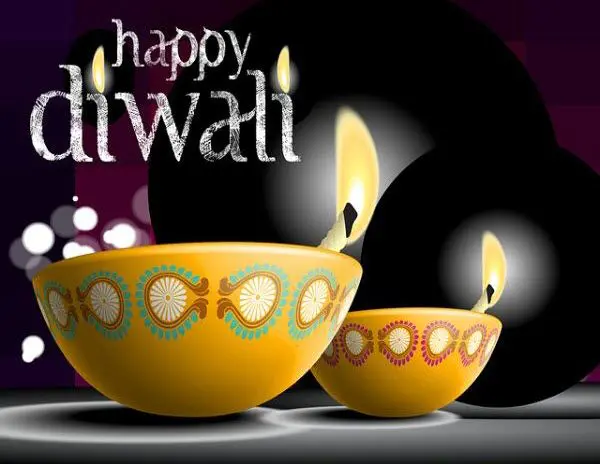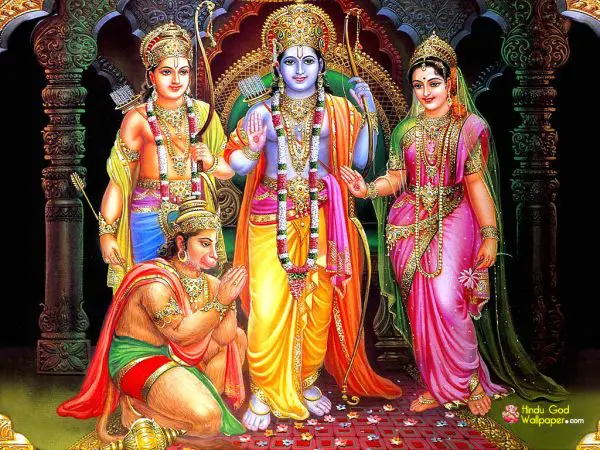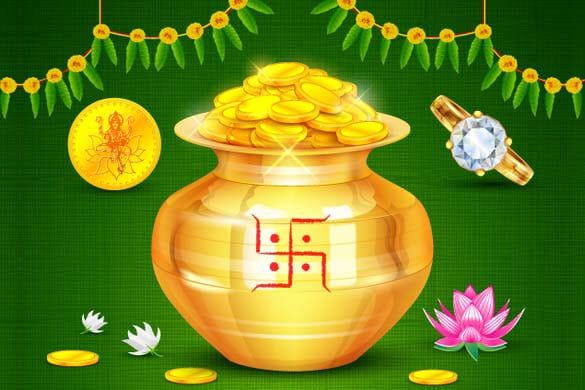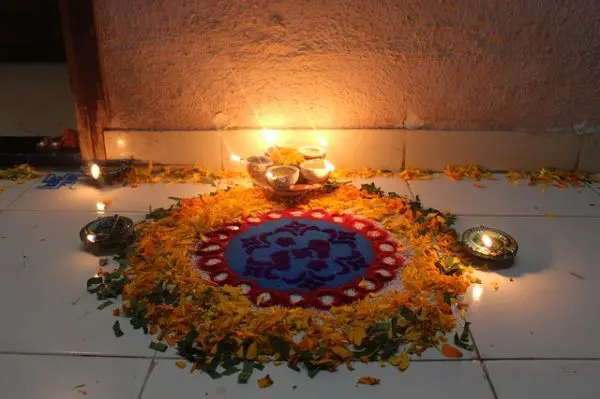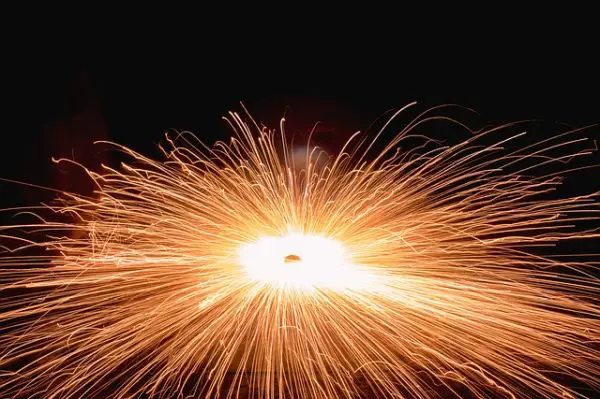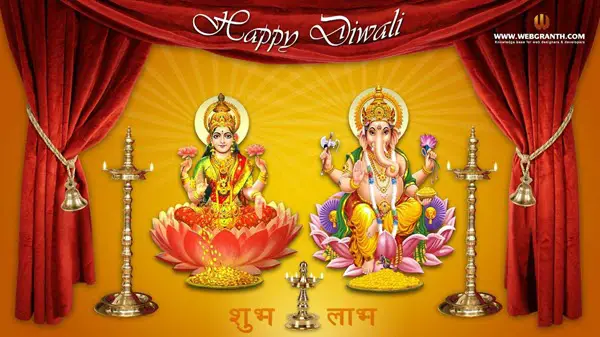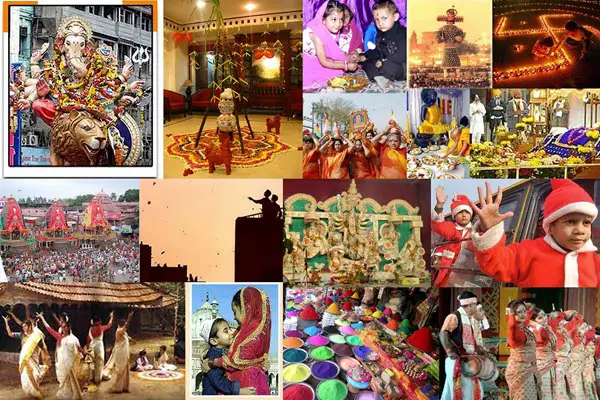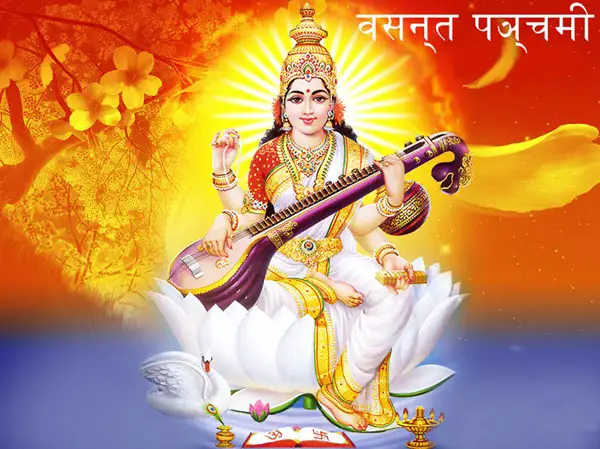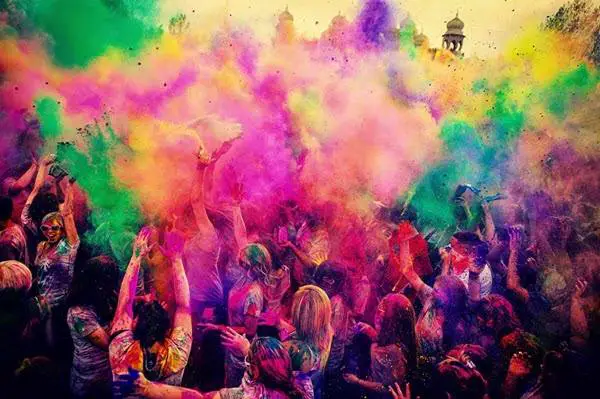Diwali is the most spectacular festival of the Hindus. Diwali is also known as Deepavali. It is the Festival of Lights.
Diwali is celebrated with tremendous enthusiasm all across the length and breadth of the country as well as various parts of the world.
It is celebrated each year in October or November.
Hindus believe that life is a celebration.
They have a special place for festivals that celebrate the richness and magnificence of life in its full grandeur.
Hindus celebrate many festivals all throughout the year.
Diwali is the most important festivals of the Hindus.
Today, you will come to know why Diwali is celebrated.
The post goes on to describe How to celebrate Deepavali.
So, let’s begin and discover the splendor of Deepavali in all its magical dimensions.
Table of Contents
Why is Diwali Celebrated?
Diwali or Deepavali is a Hindu festival of lights.
In fact, Deepavali is the most popular festival of the Hindus.
It has the status of being the biggest and the brightest festival of India. However, it is also celebrated in different parts of the world with equal joy, enthusiasm, and festivity.
Diwali celebrates the victory of light over darkness, knowledge over ignorance, and good over evil.
The Diwali festivities last for five days. Diwali is a five-day long festival.
During the Diwali celebrations, temples, homes, shops, and office buildings are brightly illuminated.
The climax of the festival reaches on the third day of Diwali that coincides with the darkest night of the Hindu Lunisolar month Kartika.
The festival falls between mid-October and mid-November.
It is usually celebrated eighteen days after the Dussehra festival.
The Diwali festivities begin with Dhanteras which marks the first day of the festival.
The second-day celebration is known as Chhoti Diwali.
The main festivities occur on the third day where devotees perform Lakshmi Puja.
The following day is celebrated in the form of Govardhan Puja.
The Diwali festivities culminate with Bhai Dhooj.
Diwali is from Sanskrit dīpāvali meaning “an array or series of lights.”
Actually, it consists of two words – “deep” (lamps or diyas) and “avali” (row); so it means a row of lamps, and that’s why Diwali or Deepavali is also known as the “Festival of Lights.”
During Diwali festival, lamps are lit in every household.
In fact, Deepavali is celebrated for various reasons.
On the day of Deepavali, Goddess Lakshmi is worshipped. She is the giver of wealth and prosperity.
She is the wife of Lord Vishnu.
It is said that Goddess Lakshmi was born from Samudra Manthan wherein the Devas and Asuras churned the mighty oceans for “Amrita.”
Diwali is the night when Devi Lakshmi chose and wed Lord Vishnu.
The Diwali festival started as a fusion of harvest festivals in ancient India. It is mentioned in various Sanskrit texts such as the Padma Purana, as well as Skanda Purana.
There is also one historical reference which attributes Diwali to the legend of Yama and Nachiketa on the day of Kartika Amavasya that is the Diwali night.
The festival of Diwali is closely associated with the epic of Ramayana. It is believed that Diwali is the day when Lord Rama, Sita, and Laxman, returned to Ayodhya after serving fourteen years in exile.
During his exile, Lord Rama vanquished the demon Ravana, the king of Lanka. It is said that people lit lamps all along the way to light their path in the darkness.
Diwali and Lord Krishna
In South India, Diwali commemorates the conquering of the demon Narakasura who had imprisoned thousands of people.
It was Lord Krishna who subdued Narakasura and freed the prisoners. It is celebrated on the ‘Naraka Chaturdashi’ tithi preceding Amavasya in the Tamil month of Aipasi (Thula Month).
According to Hindu religious beliefs, the Absolute Fire Principle, Tej Tattva, is almost absent in the atmosphere during the four months preceding Diwali.
Due to this, the Demons used to trouble the people (in the ancient Eras). So, to subdue and conquer Demons, Diwali was celebrated, which is worship based on the absolute Fire Principle.
Diwali destroys the distressing elements that are present in the environment. Diwali conquers evil and establishes peace, harmony, and tranquility around us.
It symbolizes the conquest of divine thoughts over evil tendencies and ignites the flame of spiritual passion. It increases the power of piousness which fills our heart with happiness.
Worshiping of Lord Ganesha
Diwali is also known for the worship of Lord Ganesha, the elephant-headed son of Lord Shiva and Goddess Parvati.
He is remembered as the Lord of ethical beginnings and the remover of obstacles.
Diwali and Goddess Durga
In eastern India, the festival of Deepavali is associated with the Goddess Durga or her fierce avatar Kali. Goddess Durga symbolizes the victory of good over evil.
Lord Kubera who symbolizes treasury and wealth management is also worshiped on Diwali.
Hindus use the occasion to strengthen family and relationships.
There are many more reasons why Diwali is celebrated.
Let’s get to know them one by one.
On this day, Lord Vishnu in his Vamana Avatar rescued Goddess Lakshmi from the prison of King Bali.
This is another reason why Maa Lakshmi is worshiped on Diwali.
It is stated in Mahabharata that the five Pandavas (Yudhishthira, Bhima, Arjun, Nakula, and Sahadeva) returned from their 12 years of banishment (they were defeated at the game of dice by the Kauravas) on the day of “Kartika Amavasya” that is now celebrated as Diwali. Their subjects celebrated their return by lighting earthen lamps.
King Vikramaditya, one of the greatest Hindu Kings, was crowned on the Diwali Day. The legendary emperor is known for his generosity, courage, as well as the patronage of scholars. So, Diwali came to be recognized as a historical event.
Diwali is also the day when Maharishi Dayananda, the 19th-century scholar and one of the greatest reformers of Hinduism, attained his nirvana. Maharishi Dayananda preached nobility and universal brotherhood.
Deepavali is also a special day for the Jains. Lord Mahavira attained his nirvana on the day of Diwali.
Diwali is also a special day for the Sikhs.
It was on Diwali in 1577 that the foundation stone of the Golden Temple at Amritsar was laid. The third Sikh Guru Amardas institutionalized Diwali as a Red-Letter Day and instructed all the Sikhs to receive the Gurus blessings.
How to Celebrate Diwali?
Diwali Celebrations last for five days which begin from Dhanteras and continue till Bhai Dhooj.
People decorate their home and workplaces with lamps and electric lights.
Rangoli designs are drawn on this auspicious festival.
Bowls of water with candles and flowers floating on the surface also form of decoration on the festival of Diwali.
There is a special effort to clean homes. People wear new clothes and distribute sweets to close friends, family members, and business associates.
Fireworks lit up the sky in the evening, and it’s simply spectacular.
Melas or fairs are organized in cities, towns, and villages where people gather in large numbers. Diwali is an important festival for the businessman. On this day, ink bottles, pens, and new account books are worshipped.
During the five days of festivity in Diwali, various rituals are performed, and with Goddess Lakshmi, several other Gods and Goddesses are worshipped.
However, Goddess Lakshmi is the most significant deity of Diwali. Lakshmi Puja is the highlight of Deepavali.
On Diwali, newly installed idols of Lord Ganesh and Goddess Lakshmi are worshipped. Kuber Puja and Bahi-Khata Puja are also done. People observe full-day fast.
Here is the complete list of Pujas which are performed on the day of Diwali:
- Atma Shodhan: Self-purification
- Sankalp: Solemn vow to perform Diwali Puja ritual
- Shanti Patha: It is recited to bring peace, happiness, and prosperity in one’s life
- Mangal Patha: It is recited to fulfill wishes in everyone’s life
- Kalash Sthapana: To initiate Deepavali Puja
- Bhagwan Ganesh Puja: Lord Ganesh puja is performed with mantras and prayers. Sweets are offered. Incense and flowers are offered.
- Nav-Graha Puja
- Shodasha Matrika Puja
- New Ganesh Pratima Puja
- New Shri-Pratima Lakshmi Puja
- Maha Kali Puja
- Saraswati Puja
- Kuber Puja
- Deep Malika Puja
- Visarjan: formal conclusion of Diwali Puja with Prayer
All the above Pujas are performed observing full traditional customs and rituals. However, rituals and customs differ according to regions and beliefs.
Puja Muhurat is also taken into consideration for performing these Pujas, especially Lakshmi Puja.
It must be remembered that the height of Diwali celebrations is on the third day of the festival which is the darkest night of the month of Kartik.
It marks puja and rituals, fireworks, feasts, sharing of sweets, family gathering, greetings, and other festivities.
As we have told you that Deepavali happens to be a five-day long festival here are details of this five-day celebration.
Day 1: Dhanteras
Dhanteras is the thirteenth day of the dark fortnight of Kartik and marks the beginning of Diwali.
It’s a day to purchase new utensils, jewelry, home equipment, firecrackers, and other items. People offer prayers to Goddess Lakshmi and Lord Ganesha. Dhanteras is regarded as an auspicious beginning for the next year.
We have come up with an exclusive post on Dhanteras.
So, if you want to know more about Dhanteras Celebrations in detail, you simply need to visit the post: Dhanteras Festival of Wealth
Day 2: Chhoti Diwali or Narak Chaturdashi
It is the second day of Diwali festival and coincides with the fourteenth day (second fortnight) of the month Kartik.
The day is usually interpreted as a day to liberate any souls from their sufferings in “Naraka” or hell. Hindus pray to liberate their ancestors.
On this day, Lord Krishna overpowered and killed the demon Narakasura and freed 16000 imprisoned princesses kidnapped by Narakasura.
It is a day when people purchase festive foods. They also visit their favorite Hindu temple.
Day 3: Lakshmi Puja
It is the main day of the festival wherein people worship Lord Ganesh, Goddess Lakshmi, and Kuber.
We have highlighted the festivities of this day in a separate section that is listed below.
Day 4: Govardhan Puja
It is the day after Diwali and is known by various names such as Annakuta, Kartika Shukla Pratipada, Bali Pratipada, Govardhan Puja and other names.
We have done a detailed post on Govardhan Puja which you can check: Govardhan Puja Story
Day 5: Bhai Dooj
The last day of the Diwali festival is celebrated as Bhai Dooj.
It celebrates the loving bond between brother and sister. It is similar in spirit to Raksha Bandhan.
According to popular legend, Lord Krishna visited her sister’s place, Subhadra, after defeating the demon Narakasura. Subhadra welcomed Lord Krishna with a Tilak on his forehead.
On this day, womenfolk perform a puja and pray for the well being of their brothers. They feed their brothers with their hands and receive gifts in return.
Usually, the brothers would travel to meet their sisters. Sometimes they invite their sister(s) to their place and celebrate the festival with love.
Here, we go on to list down the activities that you can do to celebrate Diwali at your home.
How to Celebrate Diwali at Home
Diwali celebrations begin with Dhanteras which is the first day of the ‘festival of lights.’
However, you should clean your house thoroughly before the first day of Deepavali or Dhanteras.
It is “cleaning” ritual to get rid of all the unnecessary elements in your environment.
Once you have done with the cleaning, you should draw small footprints (symbolizing Goddess Lakshmi footprints) with rice and vermillion powder over your house.
It is done to welcome Goddess Lakshmi in your house on Diwali.
It is considered auspicious to buy utensils and ornaments on the first day of Deepavali. People usually buy gold ornaments and jewelry.
You should decorate the entrance way to your house using traditional Rangoli designs. One can include bells, flower garlands, wall hangings, LED lights, etc.
You can search Rangoli designs across the Internet.
You can also use your creative skills and create your design.
Diya or Lamps
In the evening, you should light small oil lamps (called “Diyas”) and place them on the premises of your home.
The lamps are a symbol of knowledge or one’s inner light. It fights traces of darkness and ignorance and brings about inner peace and joy.
The lighting of lamps should be done every night during the five days of the Diwali festival.
Crackers
The firecrackers and fireworks are an integral part of the Deepavali festival. So, you should light some firecrackers and fireworks. It is believed that it wards off evil from your surroundings. It is customary to set off the firecrackers & fireworks in greatest numbers on the main Diwali night (third day).
However, you should follow all safety precautions while setting off firecrackers. Do take care of your small children as well as your pets and keep them away from firecrackers and frightening noises.
New Clothes
The Diwali celebrations are not complete without new clothes and jewelry. So, you should adorn yourself with new clothes and jewels. Moreover, it is customary to wear new clothes and jewelry particularly in the second and third days of Diwali.
Traditionally, women wear a sari and may even go for salwar-kurtas. Men usually wear kurtas.
However, ultimately it is a matter of your personal choice and preference. You can choose to wear any new clothing which suits your fashion habit, and liking. The dress you choose should be colorful and should be of nice fitting.
Diwali Sweets
To make your Diwali celebrations a memorable one, you should prepare delicacies, sweets, and desserts.
Some examples of traditional Indian sweets include Barfi, Gulab Jamun, and Rasgullas, Gajar ka Halwa, Jalebi, and Kulfi.
Do remember that Deepavali is a meatless festival. So, you have to go vegetarian.
Diwali Puja
Puja and ritual ceremonies are essential aspects of Diwali celebrations. The most important one is the Lakshmi Puja. It is performed on the main Diwali night which is the third day of Diwali.
So, you should perform Lakshmi Puja on the third day of Deepavali.
It is done to seek divine blessings of Goddess of Wealth, Lakshmi.
Those who strive to achieve wealth must do Lakshmi Puja. Lakshmi Puja consists of elaborate rituals.
Most essentially, you have to use Lakshmi idol and recite Vedic mantras to invoke the Goddess. At the end of the puja ceremony, you have to perform Lakshmi Aarti.
You can invite Purohits who can assist you in performing Lakshmi Puja.
The entire Lakshmi Puja should be done in a peaceful atmosphere.
Diwali Games
On the main Diwali night, people play games which include card games, rummy, charades, musical chairs, and hide and seek.
Usually, people put money at stake in card games.
It’s also important that you wish your loved ones with greetings and a long life.
This is the traditional way of celebrating Diwali. Deepavali provides us a wonderful opportunity to celebrate life. It’s an occasion to welcome peace, happiness, and prosperity in one’s life.
Diwali is simply a Gem of a Festival.
Diwali Date and Diwali Puja Time

